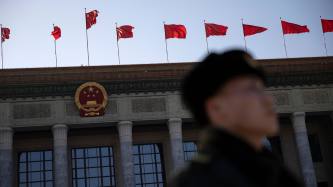Indonesia is one of south-east Asia’s fastest growing economies, but its banking market is still in the embryonic stage, with sectors from investment banking through to microfinance shallowly penetrated. This means, however, that the vast Indonesian archipelago presents foreign and local banks alike with strong growth opportunities.
Editor's choice
While headline economic growth in Indonesia may slow in 2014, with predictions of gross domestic product growth varying from Citi expecting 5.3% to local bank Danamon predicting a more sedate 2.9%, the country's longer term growth prospects are more impressive, with the emergence of a middle class set to drive growth for years to come.
Boston Consulting Group (BCG) predicts that 8 million to 9 million people will enter the “middle class and affluent” demographic every year for the rest of the decade. BCG estimates that there are currently about 74 million members of the Indonesian middle class, and that number is set to double by 2020.
“Perhaps because of this rising economic tide, Indonesians are extremely optimistic about their financial futures – more so than people in any other country, including both emerging and developed markets,” BCG said in a report on Indonesia’s economic prospects.
The risk of growth
So does this mean that banks will simply be able to ride Indonesia’s rising economic tide to greater growth. Not so, say analysts. With growth comes a new set of risks.
One reason for this is the huge geographical span of the Indonesian archipelago. There are currently 25 urban areas in Indonesia with more than 500,000 people falling into the middle class bracket, according to BCG’s estimates, but by 2020 there will be 54 such areas.
What this means is that banks wishing to reach the same proportion of the middle classes that they currently serve will need to double their presence in Indonesia. This logistical challenge will favour banks with economies of scale, which are able to understand the country’s demographic and regional trends and can tailor the right product mix for different consumers.
“The Indonesian banking sector is set to see a wave of consolidation with big banks growing larger and smaller banks fading from view. With a leadership transition looming, we’ve seen a slowdown in mergers and acquisitions but a new cycle will start in 2015,” says one Jakarta-based banking sector analyst at a local brokerage.
On top of coping with these changing demographics, banks in Indonesia are nervous about the looming change in the country's leadership. Citibank chief operating officer in Indonesia, Tigor M Siahaan, says: “The election is a risk that we are facing.” However, he adds that Indonesia has come a long way in terms of its democracy and “we think this will be another democratic, smooth event.”
Foreign presence
For Citibank, the ebbs and flows of political tides do not have any bearing on the bank’s growth plans, as it remains focused on organic growth in both its consumer and corporate business and its investment banking arms.
“Given our strong penetration in the market, and our ability to deepen and expand our target market, we believe [our] organic growth strategy will give us a steady growth trajectory into the future,” says Mr Siahaan.
Last year was a jittery one for foreign banks looking to find a foothold in the Indonesian market. In July, new rules requiring banks to hold 8% of their local third-party funds in government bonds came into effect, which makes the operating environment hard for foreign banks that run large trading positions but have a small local balance sheet.
“The aim is to ringfence the Indonesian financial system from an outside crisis. It’s not a big deal for us, but it has been tough for some players,” says Ali Setiawan, managing director of global markets at HSBC Indonesia.
DBS hurdles
A month later, the collapse of Singapore lender DBS’s $7.2bn plan to take over Danamon, Indonesia’s sixth largest bank by assets, sent jitters through the foreign banking community among those eyeing acquisitions.
Melvin Teo, president director of the DBS Group's local unit, DBS Indonesia, is sanguine about the deal’s failure, saying that while it will now take DBS longer to reach the size and scale it is aiming for in Indonesia, the bank's core focus remains on organic growth. “The availability of the Danamon transaction provided a platform for us to accelerate our growth ambitions under a much shorter timeframe,” he says.
The deal unravelled after Indonesian regulators limited new lenders from acquiring more than 40% of any Indonesian bank in one move. The deal’s failure highlights the difficulty that other foreign banks could face in expanding their reach into south-east Asia’s largest economy, though foreign lenders can still acquire up to 99% of a local bank through a complex 18-month process that is subject to further approvals.
However, analysts in Jarkarta say fears about the difficulty of expanding in Indonesia may be over-exaggerated. They claim that the deal’s failure does not signal a reluctance on the part of Indonesian regulators to allow foreign banks to expand their foothold in the country through acquisition, but rather reflects the testy relationship between the Indonesian and Singaporean authorities.
“The failure was less about protecting the domestic market and more about the Singaporean government not meeting the demands of the Indonesian government. The operating environment is challenging for Singaporean banks but not so much for companies hailing from other countries,” says an analyst at a Jakarta-based brokerage which covers the banking sector.
BTPN shows the way
Japan’s Sumitomo Mitsui Banking Corporation recently purchased a 40% stake in publicly listed Bank Tabungan Pensiunan Nasional (BTPN). This could provide the Japanese bank with a springboard to buy more shares over time.
BTPN is a bank that illustrates the value in thinking creatively about lending opportunities in Indonesia’s nascent banking sector, given the success of its programme aimed at funding the country’s 'productive poor'. “We have always been and will remain a mass-market focused bank,” says BTPN CEO Jerry Ng, who adds that penetration of the mass-market lending sector in Indonesia is still very shallow.
Mr Ng says BTPN uses funds from its more affluent customers to back its micro-finance lending programme and uses its social welfare programme – called 'Daya', meaning empowerment in Bahasa Indonesian – as a selling point.
“We fund our expansion from the top of the pyramid, with branches in affluent neighbourhoods of key cities, but we also offer our customers a chance to touch the life of the masses through our Daya programme,” says Mr Ng. “Daya is really the soul of the bank. It’s about creating an ecosystem,” he adds. This ecosystem links affluent customers with the poorest Indonesians and educates small businesses on growth strategies.
As an example of how Daya works, doctors who deposit money at BTPN can also volunteer their services at clinics organised for pensioners, who can use their pensions as collateral to fund micro-loans. Through Daya, BTPN not only organises clinics for pensioners but also runs workshops for small businesses teaching them how to manage their inventories and cash flows, as well as connecting them with suppliers or customers.
BTPN is also developing small and medium-sized enterprise (SME) micro lending, with sums of up to $50,000, using loan officers who have become experienced at assessing risk among BTPN’s 1.5 million Daya customers, to offer loans to growing businesses that cannot tap conventional lending channels because of their lack of proper accounting, or are too big to borrow from more informal money-lenders.
“[These businesses'] working capital needs are much larger than micro business, which is a challenge for most banks, because they don’t have proper book-keeping and mix personal and business money, so if banks are to assess them based on SME risk assessment, they won’t pass,” says Mr Ng, who adds that BTPN has identified this market segment as having huge growth potential.
The human touch
Indonesia’s mass-market customers still tend to demand a human touch and personal contact point, which means opening lending offices in unlikely locations. Indonesians shop primarily at small shops and 'wet' (fresh meat and produce) markets, so Danamon bank has opened a wet market network.
“As a pioneer in the micro enterprises segment, Danamon has established a prominent presence in traditional wet markets through a wide network and community banking approach,” says Danamon's chief financial officer, Vera Eve Lim. Danamon is expecting 15% loan growth this year through a continued focus on micro, small and medium-sized enterprises.
Local banks such as BTPN and Danamon are best placed to serve the mass-market segment, leaving foreign players to expand in corporate banking and wealth management.
DBS’s Mr Teo says his bank's core growth engines are wealth management and SME global transaction services, where DBS’s strong Asian network comes into play. Meanwhile HSBC, which operates 47 branches across the country, has Indonesia’s strongest trade finance business.
“A lot of banks just do investment or consumer banking. We have a fully fledged presence, serving local companies, multinationals, consumers and corporates. We do it all,” says Mr Setiawan at HSBC Indonesia. He points to Indonesia’s over-reliance on commodities exports as a structural economic weakness, saying the government’s boosting of consumer spending has contributed to a growing trade deficit. “Exports are not going to turn around any time soon, so we need to rebuild our agricultural sector and restructure our economy,” he says.
Reaching gridlock
Another risk to growth is Indonesia’s terrible infrastructure, says Citi’s Mr Siahaan. The country’s capital is renowned for its traffic jams. “Despite the growth momentum given the strong and rising consumer purchasing power, we believe that infrastructure build is a necessary fundamental for Indonesia to continue its development,” says Mr Siahaan.
He adds that with 2 million to 2.5 million joining the Indonesian workforce every year, the country needs roads, power plants, airports and seaports to support that job creation.
Mr Setiawan concurs, saying that all eyes will be on the election and the country needs strong and decisive leadership to unlock the infrastructure gridlock. “In Indonesia, we have a saying: 'Why make it easy when you can make it difficult?' There is a lot of bureaucracy holding infrastructure investment back and that needs to change,” he says.












